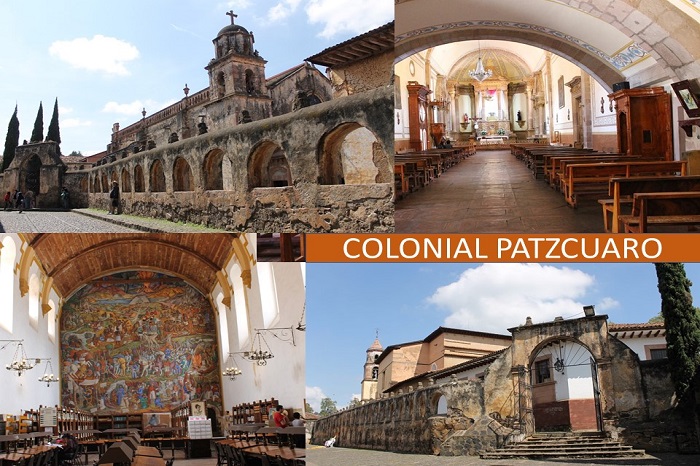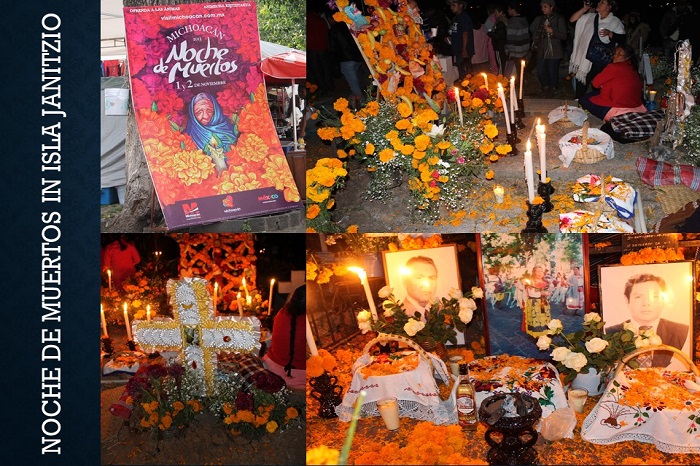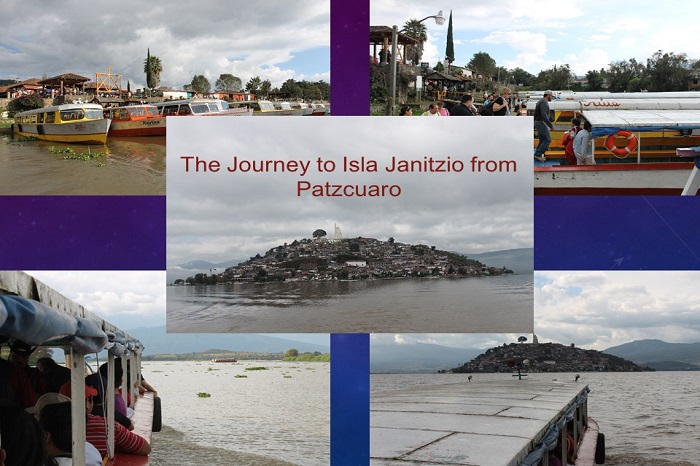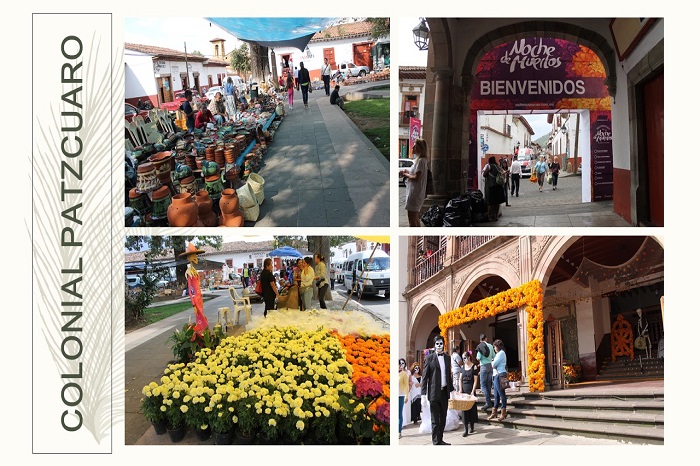Mexico is one place in the world where the Dia de los Muertos is celebrated way too seriously. Sure, most former Spanish colonies in Latin America have their own little variations of this festival. Many of these were created by the fusion of indigenous folk beliefs with Roman Catholic traditions. Mexico, however, has one of the liveliest variants. Dia de los Muertos in Mexico is a unique syncretism of ancient Aztec veneration of the Goddess of Dead and Catholicism. The epicenter of this amazing celebration in Mexico is in a place called Patzcuaro.
Basically, anywhere in Mexico from east to west, it is a treat to watch them celebrate the Dia de Muertos festival. During the festival, Mexicans everwhere wear skeleton and skull costumes and bake the pan de muerto (bread of the dead). Then, they troop to the cemetry where they build altars made of flowers and bring food for the dead ancestors. The traditional Mexican belief dating back to the Aztecs is that the deceased return to be with their families on this special day. The event has become very ingrained in Mexican culture that UNESCO has declared it a humanity heritage event.

Dia de los Muertos in Mexico is such a festive sight, with floral offerings and calaveras (skulls) in display everywhere.
As I said earlier, there is one Mexican locale though that outstrips them all when it comes to Dia de los Muertos festivities. That is the old town of Patzcuaro and in its adjoining island of Janitizio in Michoacán State. Now, Michoacán State is certainly off the beaten path. Its capital city, Morelia was formerly known as Valladolid and was renamed in honor of Mexican independence hero Jose Maria Morelos. The city has one of the more beautifully and better conserved colonial districts in Mexico. Michoacán also boasts of being the host of the famous migratory locale for the Monarch butterflies.
Lately, however, Michoacán has become a hotbed of the narco-violence. Vicious drug cartels with flamboyant names, such as La Familia, Knights Templars, Cartel New Generation, and Los Zetas, have made the state a battleground. It was the time of the “Great Rising,” when I came to visit in late 2013. Self-styled vigilante forces have had enough of the drug cartels and rose up in arms. They proceeded to evict the drug cartels from one town to another in Michoacan. (Watch the YouTube documentary Narcoland). Those were very interesting times indeed. And, I had a front row seat of the unfolding events.

Patzcuaro is indeed a Pueblo Magico (a magical town). It’s a town frozen in time.
Back to Patzcuaro. It was a place I have always wanted to see. Twice already that I had to cancel the trip because of the on-going political climate. Regardless of the unfolding drug-fueled violence, there was no way in hell I was going to miss it, and I was glad I went anyway.
Located in an ancient Tarascan lake that bears its name, Patzcuaro has a very important role in Mexico’s history. The city can easily be reached by riding a bus to Morelia and then by shifting to local bus to the lakeshore colonial town. For foreigners, it takes a lot of courage to travel to Patzcuaro via public transportation. However, experiencing this momentous occasion in the flesh is more than enough reward.

Mexicans believe that their departed ancestors return to be with the living during the Noche de Muertos. Food, candles and floral offerings are offered for the dead.
Patzcuaro is a pretty little town that has seemingly been left behind in the 16th century. The town was established by Bishop Vasco de Quiroga, known by the Tarascan as Tata Vasco. He is known for his benevolent treatment of the natives. Tata Vasco is venerated as a saint by the local Tarascan Indians. (Even if the Roman Catholic Church continues to ignore his contribution). His tomb in Patzcuaro is considered by locals as a source of healing power.
When Bishop Quiroga died, the next Oidor (local administrator) transferred the state capital to Valladolid (Morelia today). This move helped conserve the 16th century ambience of the town as seen from its tiled adobe dwellings and cobbled streets. The town’s pretty plazas, historic churches, and colonial homes are absolutely a treat to one’s eyes and senses. This is made even more appealing by its attractive tiangges (markets) that sells unique food, trinkets, and artisan products.

The embarkation point to the magical isle of Janitzio is via Patzcuaro.
The festival of the Day of Dead is celebrated across all towns in Lake Patzcuaro which can all be reached from Patzcuaro. Virtually all of those towns are possible points of interest to view this unique celebration. The most-renowned is that of the Island of Janitzio, which is accessible by a short boat ride from Patzcuaro. That pier to Janitzio is open for 24 hours from 31 October to 02 November.
Here, thousands of locals and visitors alike troop to the island’s campo santo (cemetery). There, they conduct overnight vigil among the pretty little tombstones, which they fill with ofrendas during the festival. The tradition is called the “Velacion de los Muertos” locally. People offer prayers, light candles, and offer flowers and food to the deceased, who are believed to join the living again to partake the offerings.

Colonial Patzcuaro dresses up for the occassion for Dia de los Muertos.
The trip to Patzcuaro and Janitzio would not be complete if one does not do what the locals do. And this is conduct vigil all night long until sunrise. On the eve of 02 November (Noche de Muertos), Janitzio’s locals have prepared masses, processions and festivities to coincide the supposed return of the dead among the living. Families troop to the tombs with colorful floral offerings, mostly made up of marigold and chrysanthemum.
The Campo Santo turns into a virtual flood light as thousands of candles are lit to illuminate the return of the dead. True to Mexican custom, many locals, decked in calaca and calavera costumes, also use the occasion to party and get drunk. This is something that, we, Filipinos, can also appreciate because we do exactly the same things during the same period.